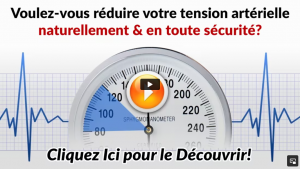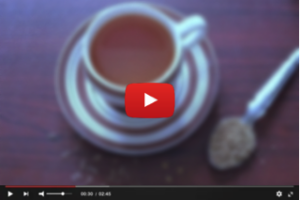Treating Blood Pressure and Headaches: Best Approaches

Introduction to Blood Pressure and Headaches: Getting to the Nitty-Gritty
Let’s kick things off by diving into the basics of blood pressure and headaches. Imagine blood pressure as the force of your blood pushing up against your arterial walls; it’s a critical game of balance in your body. And headaches? Well, they can sometimes serve as a little “heads-up” that something’s a bit off-kilter. In this section, we’re breaking everything down in plain speak—mixing clinical know-how with everyday insights—to show you how these two might connect. Trust me, catching these early signals can totally change the game when it comes to treatment and prevention.
It’s no wonder so many wonder about the relationship between these conditions. High blood pressure often lurks in the background, quietly causing trouble, and a headache might be one of the few signs that you actually notice. There’s growing evidence linking the strain on your cardiovascular system to those pesky head pains, and understanding this interplay is key to staying on top of your health. With a warm and caring approach, and plenty of evidence to back it up, we’re here to empower you on your health journey.
What Are Blood Pressure and Headaches, Anyway?
Think of blood pressure as a measure of how hard your blood is pressing against your artery walls. It’s all about making sure oxygen and nutrients get delivered throughout your body. Now, headaches can pop up for tons of reasons—from everyday tension and stress to a sudden spike in blood pressure. Sometimes, these two go hand in hand: a quick jump in blood pressure might just be the trigger that sets off a headache, alerting you that something isn’t quite right. The more you understand these signals, the better you can catch problems before they escalate.
By unpacking what’s happening behind the scenes with your blood pressure and headache triggers, you’re better armed to tell when it’s normal and when it might be time for a check-up. Whether you’re dealing with a mild nuisance or something more intense, knowing the difference can really help you act fast and steer clear of bigger complications.
How They’re Connected: A Quick Rundown
Let’s chat about the link between blood pressure and headaches. Not every headache is tied to blood pressure issues, but for some folks, especially when things get extreme, there’s definitely a connection. Studies suggest that sudden changes in blood flow from blood pressure fluctuations can kick off headache mechanisms as your body scrambles to keep everything in balance. This natural tug-of-war highlights why it’s so important to keep an eye on your numbers.
Consider this a friendly reminder: if you’re frequently getting headaches, it might be a good idea to check your blood pressure. Even if the connection isn’t always crystal clear, these signals are your body’s way of saying, “Hey, pay attention here!” We’re painting a picture of how these elements might interact, so you feel more informed and ready to take action if needed.
The Importance of Spotting Things Early
Catching early signs of trouble with blood pressure and headaches can make a world of difference. Nipping problems in the bud means you can tackle them head-on before they spiral into something more serious. Ignoring persistent headaches or skipping those blood pressure checks can potentially lead to complications affecting your heart or brain. Being proactive isn’t just smart—it can be life-saving. The sooner you spot these cues, the better you’ll be at managing and even reversing potential issues.
Our conversation here is all about prevention and awareness. With the right mix of tips, periodic check-ups, and a little everyday insight, you can better tune in to what your body is telling you. Keep an eye out for those recurring symptoms and don’t hesitate to consult a healthcare professional when something feels off. It’s all about teamwork—between you and your doctor—to stay ahead of the curve.
Recognizing the Telltale Signs
Spotting the early symptoms of blood pressure issues and headaches is key to keeping things under control. Your body often sends out subtle messages—a dull ache here, a pinch of pain there—that might be the first hints of trouble. Everyone’s experience is a bit different; what might be a minor annoyance for one person could be a signal of something bigger for another. The trick? Stay observant and catch any changes in your usual pattern.
Remember, not every headache means high blood pressure, and not every blood pressure spike will lead to a headache. But when they show up together, it’s definitely a red flag. Keep tabs on other symptoms like blurred vision or shortness of breath, and trust your gut when something feels off. Being proactive with self-assessment really goes a long way.
Spotting the Warning Signals
One of the best things you can do for your health is learn to recognize the subtle warning signals. Maybe your headache starts acting up during stressful days or you notice discomfort during even light activities. These little hints can point to more than just a temporary glitch—they might be shouting out a deeper issue. In this part, we help you zero in on these signs so you’re not caught off guard when things start escalating.
It might be helpful to keep a symptom diary—jot down what you experience each day. This simple move can shine a light on patterns that might otherwise slip by unnoticed, giving your doctor valuable insights during your next visit. Think of it as a team effort between you and your healthcare provider: clear, timely information makes all the difference.
When to Ring Up a Pro
Knowing when it’s time to call in a professional can be just as important as spotting the signs yourself. If your headaches start becoming more frequent or severe, or if you’re feeling constant dizziness, irregular heartbeats, or blurred vision, don’t wait around. Getting expert advice sooner rather than later can prevent bigger issues down the road. This isn’t about scaring you—it’s about taking responsible steps to safeguard your health.
If these symptoms concern you, consider having a conversation with your primary care doctor or even a specialist. A few tests here and there can really help pinpoint what’s going on inside your body. Regular check-ups are a smart part of your overall healthcare plan, ensuring you catch any potential problems before they turn into emergencies.
Simple Lifestyle Tweaks to Manage It All
Sometimes, the simplest tweaks to your daily routine can work wonders in managing blood pressure and headaches. This isn’t just about easing symptoms; it’s about upping your overall quality of life. Whether it’s fine-tuning your diet, ramping up your exercise, dialing down stress, or simply getting better sleep, these small changes add up. Clinical research backs it up, and plenty of folks have found success just by making mindful adjustments.
Little things—a bit more water, swapping out some foods for healthier choices—build a solid defense against those unwelcome symptoms. Think of it as an investment in your future; the benefits naturally build over time. There’s no magic formula here, just finding that sweet spot that works for you and sticking with it.
Eat Right for a Healthier Life
Good food really is the foundation of good health. Loading up on fruits, veggies, lean proteins, and whole grains can help keep your blood pressure in check and your headaches at bay. Foods rich in potassium, magnesium, and omega-3 fatty acids work wonders for reducing inflammation and keeping things balanced. Don’t get me wrong—an occasional treat is perfectly fine, but a mostly wholesome diet can make a huge difference.
The goal isn’t to feel deprived; it’s about finding a healthy balance. By cutting back on processed foods, too much sodium, and unhealthy fats, you’re setting your body up for long-term benefits. Over time, these small dietary changes can lead to dramatic, positive improvements in your overall well-being.
Get Moving and Chill Out
Keeping active is a key player in managing both blood pressure and headaches. Whether it’s a brisk walk around the block, a calming yoga session, or even a few stretches during your day, exercise releases stress and helps ease headache tension. Plus, it boosts those feel-good endorphins, lifting your mood and overall outlook.
Pair your workouts with stress-busting techniques like mindful breathing, meditation, or even a bit of tai chi. Not only does this balance your physical health, but it also calms your mind, which can often be the missing piece in managing those headache triggers.
Sleep Tight and Stay Hydrated
Never underestimate the power of a good night’s sleep and proper hydration. Your body uses sleep as a time to repair itself, and skimping on those precious hours can throw off your whole system. Similarly, dehydration is a common culprit behind many headaches. Make sleep and hydration a non-negotiable part of your daily routine, and you’ll find your body thanking you for it.
Simple habits can work wonders: stick to a regular bedtime, cut back on screen time before bed, and keep a water bottle handy throughout the day. These small yet impactful actions help maintain a steady balance in your body, keeping those blood pressure swings and headaches to a minimum.
Modern Medicine Meets Everyday Wellness
While lifestyle changes are a powerhouse in managing your health, sometimes you need a little help from modern medicine. Getting hands-on with healthcare professionals, understanding what your test results say, and staying updated on treatment options can really boost your confidence in handling blood pressure and headaches. It’s all about mixing home remedies with professional advice to keep things running smoothly.
Today’s medical world offers plenty of solutions—from medication that tames blood pressure to targeted therapies for headache relief. Knowing the ins and outs of these treatments, including the benefits and any side effects, means you’re better prepared to make informed choices about your health.
Medications: How They Help (and What to Watch Out For)
Let’s talk meds for a minute. When it comes to balancing blood pressure and easing headache pain, medications often take center stage. Doctors might prescribe antihypertensives to keep those pressure levels in check, alongside pain relievers to tackle headache symptoms. The key is to take these under the guidance of your healthcare provider, discussing any side effects and making sure you’re on the best route for your situation.
Everyone reacts differently to medications, and sometimes it takes a bit of tweaking to find the perfect recipe for you. Keeping an open dialogue with your doctor is crucial, as it helps carve out a treatment plan that minimizes discomfort while effectively managing your condition. It’s a careful balance of science and personal care.
Keeping a Close Eye: Monitoring and Check-Ups
Routine self-checks and regular visits to your doctor are real game-changers. Tracking your blood pressure at home and noting any shifts in your headache patterns means you’re catching potential issues before they become big problems. These modern gadgets make it easier than ever to stay on top of your health.
Regular monitoring isn’t just about numbers—it’s about building a partnership with your healthcare provider. Consistent check-ups allow for early adjustments to your treatment plan, reinforcing that proactive approach to health.
Getting Expert Advice When It Counts
Let’s face it—self-care is important, but nothing beats professional guidance when it comes to your health. If your headaches or blood pressure start acting up, getting a seasoned expert’s opinion can make all the difference. They’ll help interpret your numbers, weigh in on your symptoms, and tweak your treatment plan as needed.
Don’t hesitate to reach out when something doesn’t feel right. Trusting in a knowledgeable healthcare provider is a key step in navigating these challenges safely and effectively.
Exploring Natural and Alternative Options
Beyond the conventional routes, plenty of people are turning to natural and alternative treatments to manage blood pressure and ease headache symptoms. If you’re curious about a more holistic path, there are some enticing options out there—from herbal supplements to mind-body practices that can complement your regular care.
Remember, these alternatives aren’t meant to replace professional medical advice; think of them as extra tools in your wellness toolkit. Before trying something new, it’s smart to do your research and chat with your healthcare provider to ensure it’s a safe fit for your unique situation.
Herbal Remedies and Supplements: Nature’s Little Helpers
Many have found relief through herbal remedies and supplements when it comes to managing blood pressure and headaches. Herbs like hawthorn, garlic, and hibiscus have been popular choices for keeping blood pressure steady, while supplements like magnesium and riboflavin might help cut down on headache frequency. These time-tested, natural options can be a gentle addition to your regimen.
Of course, what works for one person might not work for another, so it’s important to proceed with caution—especially if you’re already on other medications. With the guidance of a trusted healthcare provider, natural treatments can nicely complement your overall care plan.
Mind-Body Techniques: Finding Your Inner Calm
Sometimes, the best medicine for blood pressure and headaches lies within yourself. Practices like yoga, meditation, and deep breathing exercises not only ease stress but also can lead to impressive improvements in managing both conditions. Many people swear by these techniques for lowering blood pressure and mitigating the frequency of headache episodes.
Integrating these mind-body practices into your day can help foster a stronger connection between your mental and physical health. Even taking a few moments for mindful breathing here and there can break the cycle of stress, often a major headache trigger.
Complementary Therapies: Adding a Little Extra
Complementary therapies such as acupuncture, massage, and biofeedback are gaining traction as effective partners to traditional treatments. Many folks notice real improvements when these techniques are added to their care routine. For instance, acupuncture might help regulate your body’s energy flow while easing muscle tension.
These therapies, when used alongside conventional treatments, offer a balanced approach to managing your blood pressure and headaches. Always consult with your healthcare provider before diving into these options to ensure they’re the right match for your needs.








